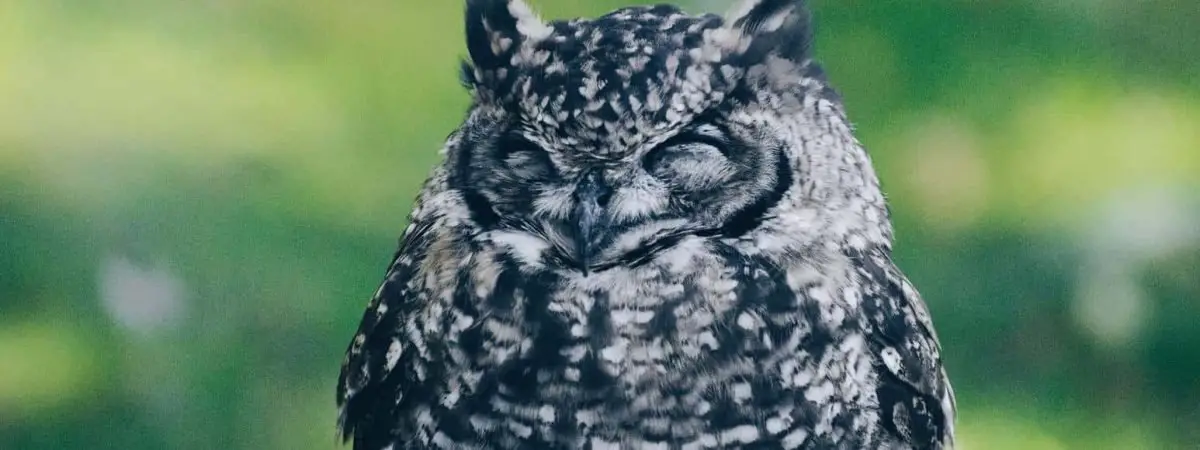
Want to learn more? This National Geographic Book on Owls is a great read!
Located between the Blue Ridge Mountains to the west and the Chesapeake Bay in the Atlantic Coast, the state of Virginia holds a diversity of ecosystems and habitats.
The landscape of this state is dominated by forest cover, mainly from deciduous and broad-leafed trees. The area covered by coniferous forest (such as pine) is smaller, and mainly in central and eastern Virginia.
On the east coast, along Chesapeake Bay, a large area is covered by river deltas and their many wetlands.
Virginia has a humid subtropical climate in most of the state, with hot and humid summers, and cold to mild winters.
West of the Blue Ridge Mountains it becomes humid continental, with milder summers but colder winters.
The state of Virginia holds one national park, the Shenandoah National Park, established in 1935; and 38 Virginia state parks, which cover approximately 28000 hectares (70,000 acres).
It also has 21 Important Bird Areas in its territory, of which 9 are of global importance.
There are eight owl species occurring in this state, ranging from the tiny Northern Saw-whet Owl to the impressive Great Horned Owl.
Some, like the Barred Owl are residents and are present the whole year, while others, such as the Short-eared Owl or the Snowy Owl are winter visitors.
Let’s know more about all of the owls we can find in Virginia.
Want to attract Owls to your yard? Take a look at our article!
What Owls can be seen in Virginia?
Table of Contents
1. Barn Owl
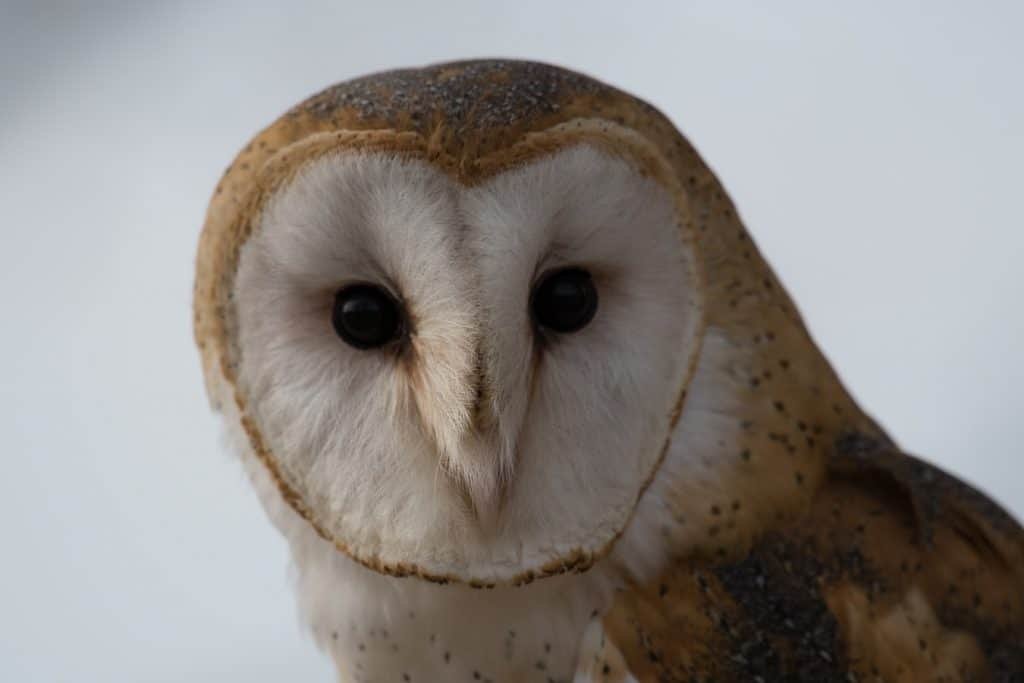
Wingspan
107 to 110 cm
Weight
430 – 620 g
Life Expectancy
Up to 4 years
Diet
Voles, Shrews & Mice
The Barn Owl is one of the most widespread bird species in the world!
It is present in every continent except Antarctica. So it also calls Virginia its home: it is a resident species and regularly nests in the state.
The Barn Owl is an open country specialist, present across farmland, grasslands and prairies. It mainly hunts for rodents (mice, rats, voles and shrews) during night time.
Quite tolerant to human presence, it even makes use of old buildings to nest or hide during the day: church towers, farm houses, and yes, barns!
It is also known to use nest-boxes whenever they are available. It is, however, in the species of special concern list, due to the loss of habitat and nesting sites mainly to intensive agriculture.
The underside of both body and wings of the Barn Owl are white, occasionally with black dots or other markings.
If seen flying at night one might even think it is a silent ghost. The upperparts range from tan to orange with dabs of grey.
It is a medium-sized owl, with deep black eyes – relatively small when compared to other owl species – and a white, heart-shaped face.
The call of the Barn Owl is a high, piercing shriek, which it can make while flying at night.
2. Eastern Screech Owl
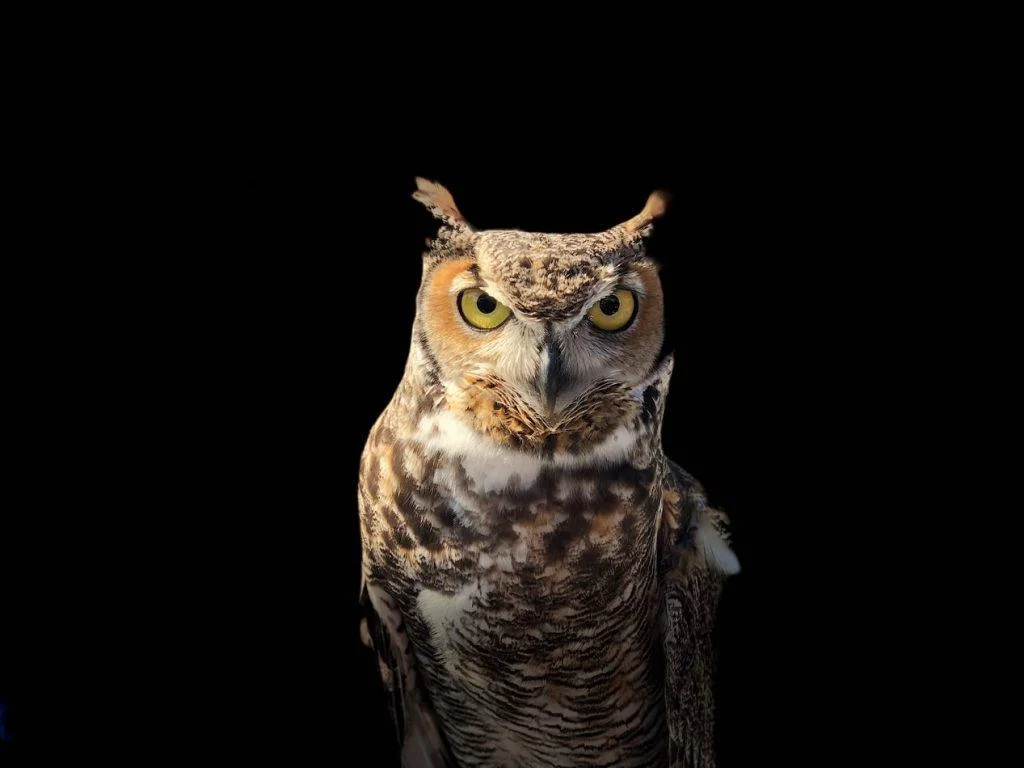
Wingspan
46 to 61 cm
Weight
160 g
Life Expectancy
14 years
Diet
Rats, Squirrels, Rabbits & Skunks
The Eastern Screech Owl is a small owl (20 to 24 cm in height). It has a proportionally large head with tiny “ear” tufts; its eyes are yellow.
This owl species can have two different plumage colors: either grey (called the grey phase) or orange to rust-colored (red phase).
Although they are called “phases”, these two plumages are not related to age or gender, they’re just two different colors, like the different eye or hair colors in humans.
Their small size and intricate camouflaged pattern makes Eastern Screech Owls difficult to see in the tree canopy.
They occupy different woodland types, from dense mature forests, to more open woodlands, even suburban parklands and old orchards. Just like the Barred Owl, Eastern Screech Owls are fond of living near water.
They nest and roost in a variety of tree cavities and also accepts nest-boxes.
Eastern Screech Owls are only active at night, when they are on the hunt for small animals such as insects, rodents and small birds and reptiles.
The easiest way to detect Eastern Screech Owls is by listening to them: their call starts in a high pitch, rapidly descending in a whinny tone. Other common call is a somewhat trepidating trill.
They are a resident species in the state of Virginia, present the whole year, with a possible peak in activity from mid-July to mid-October.
They are found throughout the state, with higher numbers in the Blue Ridge Mountains and surrounding areas.
3. Great Horned Owl
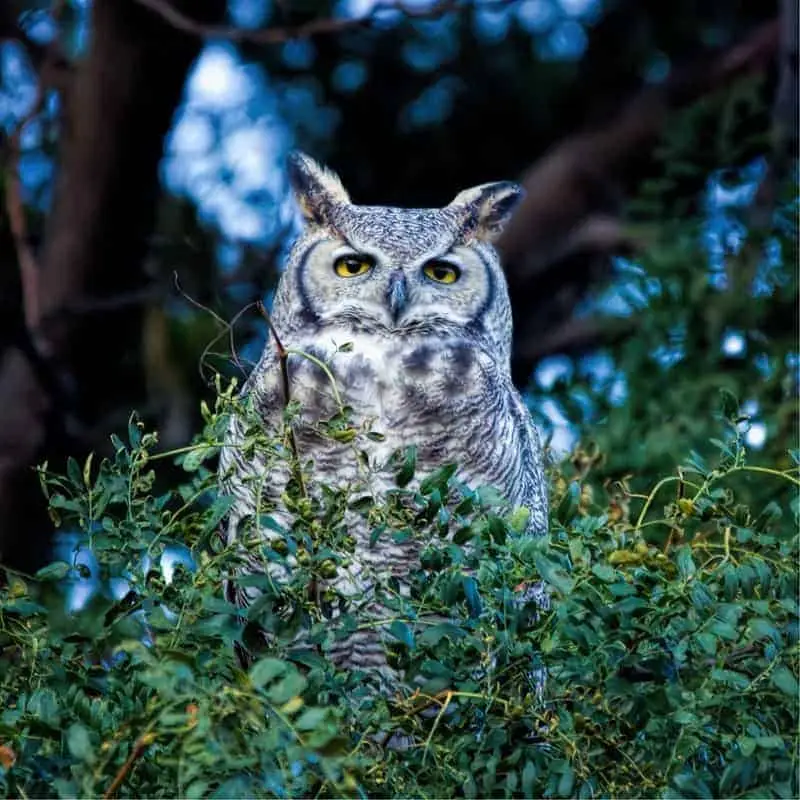
Wingspan
~140cm
Weight
1.4 kg
Life Expectancy
28 years old
Diet
Squirrels, Rabbits & Skunks
The massive and impressive Great Horned Owl has a wingspan of 1.4 meters and can be up to 60cm tall.
It is probably the most fearsome owl in North America, with a strong, bulky body, huge feet – as big as human fists – and long, sharp claws.
It’s no wonder it can hunt down prey such as skunks, opossums and even fox cubs. Yet, it feeds mainly on rabbits, mice and rats.
The Great Horned Owl’s size and its two prominent feather tufts on the top of its head – which give the owl its name – make this owl distinguishable from all others.
It has large, yellow eyes, their underparts are light brown and barred, and the upperparts are darker, often with more complex markings.
Great Horned Owls can live in different habitats, from dense woodlands, to open country with sparse trees, even wetlands and suburban parks.
Depending on where it lives and the availability of nesting sites, it can use large tree cavities; old nests of other big birds, such as eagles, crows or herons; cliff ledges and small caves.
The Great Horned Owl’s call is a deep low hoot – ho-ho-hoo hoo hoo – which can be heard at long distances.
This species is widespread throughout the state of Virginia and present all-year-round. The best period to try to observe them would be from mid-September to mid-April.
4. Northern Saw-whet Owl
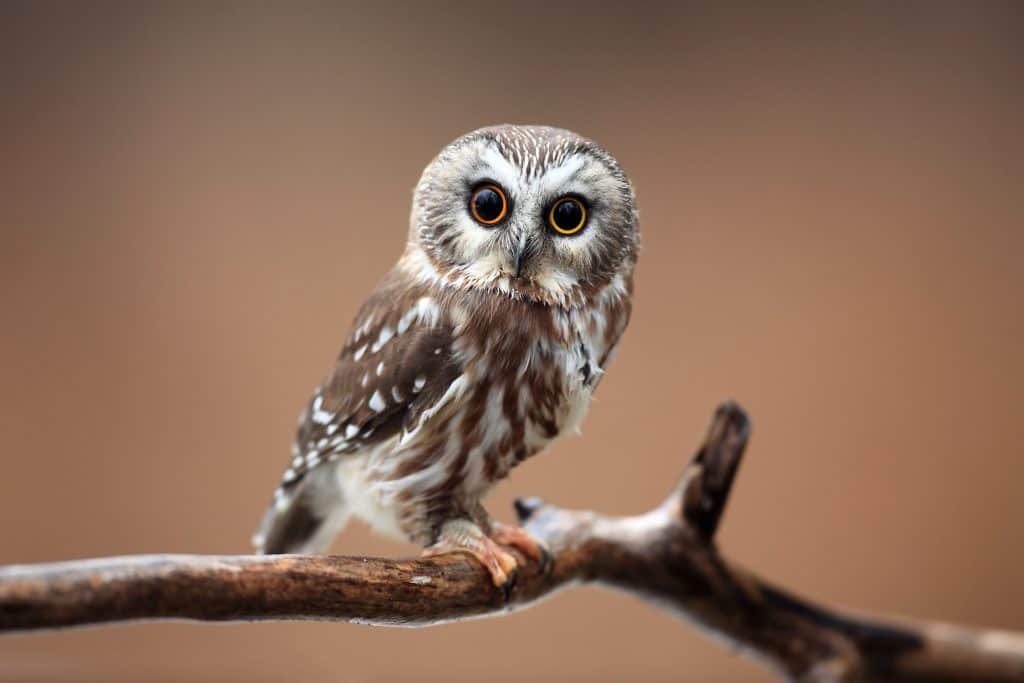
Wingspan
40 - 60 cm
Weight
100 g
Life Expectancy
7 years
Diet
Small birds, young squirrels, voles & shrews
Weighing only 100 grams, the Northern Saw-whet Owl is the smallest owl species occurring in the state of Virginia.
Its upper side is a dark, “chocolaty” brown; the underparts are lighter, with more white and grey feathers. Its head seems big, with large yellow eyes, often described as cat-like.
The Northern Saw-whet Owl has a strong preference for conifer forests with thick undergrowth.
It may also be present in mixed forest stands and near wetlands and swamps. This owl nests in tree cavities, particularly in dead stubs.
It specialized in hunting down small woodland rodents, such as voles and shrews, which it does during the night.
The call of the Northern Saw-whet Owl is a never-ending series of too-too-too whistles, which can be quite loud.
Some say this sound resembles that of a saw being sharpened (or “whetted”), making way for its common name. Its call is mostly heard during the breeding period.
The Northern Saw-whet Owl is only present in the state of Virginia outside the breeding season.
It is a frequent winter resident, although in limited numbers. During this period, it may be observed mostly along the northern and western parts of the state.
5. Short-Eared Owl
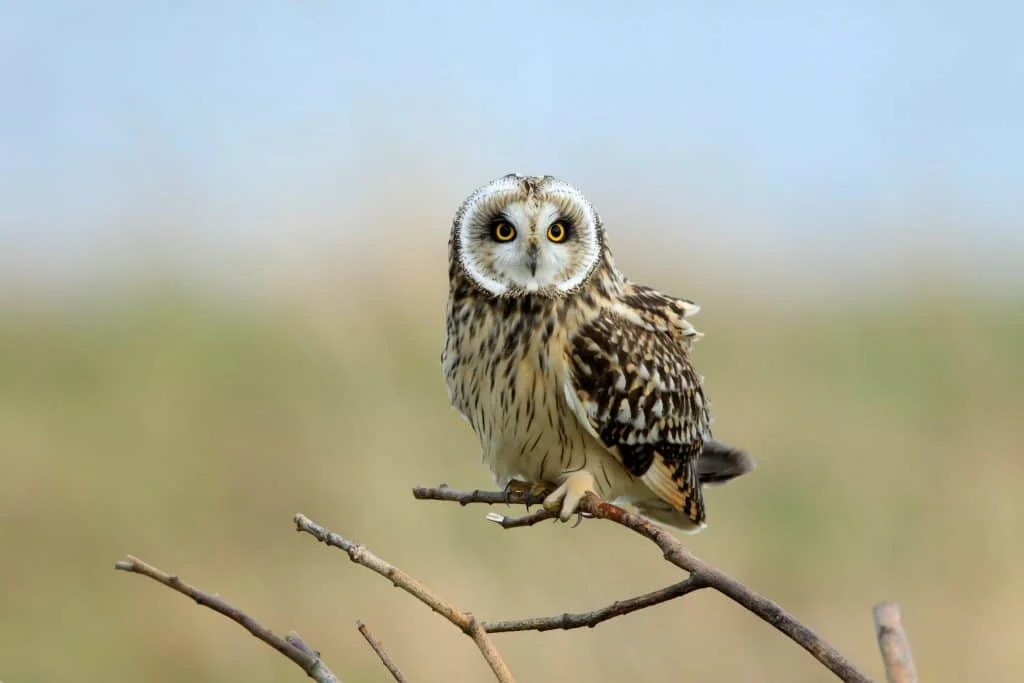
Wingspan
85 to 110 cm
Weight
206–475 g
Life Expectancy
4-12 years
Diet
Voles, Mice, Squirrels
The Short-eared Owl is a medium-sized owl, with broad, rounded wings, relatively large for its size.
Overall it is paler than the Long-eared Owl, with brown upperparts and generally lighter underside. It has a whitish face, with black markings around its yellow eyes.
The Short-eared Owl lives in open landscapes: grasslands, meadows, sparse woodlands, even marshes and dunes.
It hunts flying slowly close to the ground, above these open areas, mainly at dusk and dawn. Some say its flight pattern is similar to that of harriers.
It can also wait for its prey standing on the ground, camouflaged by its color pattern until it strikes.
Unlike other owl species, the Short-eared Owl can be quite active during the day.
Mostly silent, the Short-eared Owl only calls close to its breeding area: a long series of low hoots and bark-like sounds.
It is a wintering species in the state of Virginia, being present from November to April.
During this period it mostly occurs in the north and eastern parts of the state. The best chances to spot one are from Mid-December until early February.
During the breeding period it migrates north, to the northern US states and Canada.
6. Snowy Owl
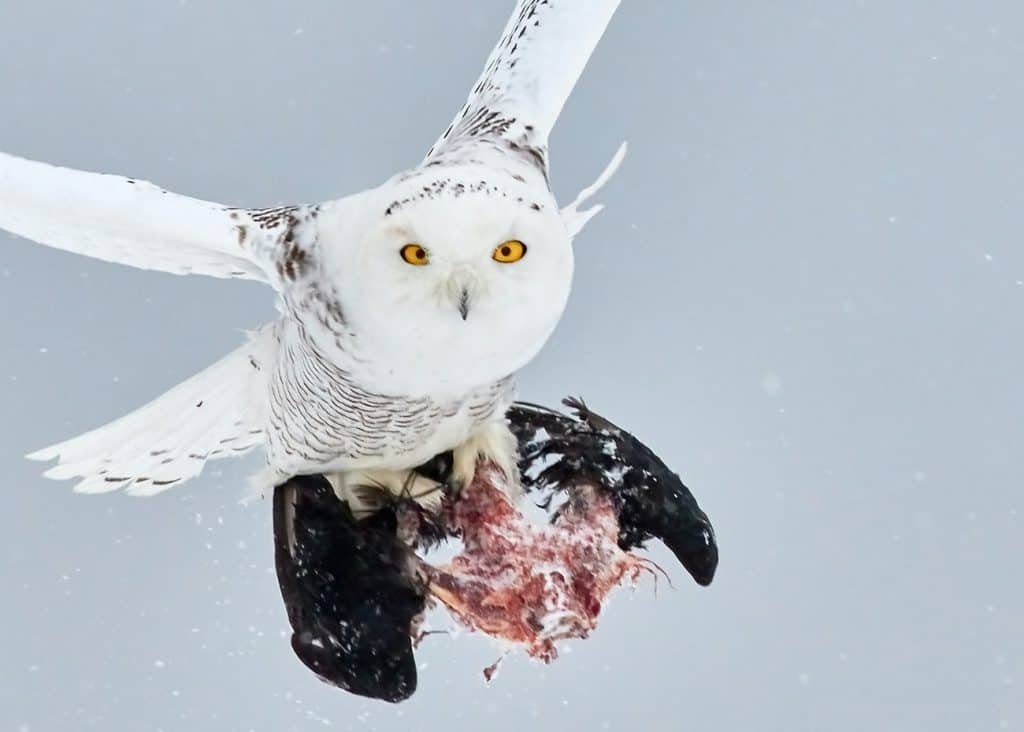
Wingspan
150 cm
Weight
2 kg
Life Expectancy
10 years
Diet
Birds, Rabbits, Fish & Rodents
The snowy owl has a bright white plumage, a perfect disguise in their snowy environment.
It may have varying amounts of black markings, depending on sex and age: young females tend to have the most amount of black in their plumages, while older males can be almost entirely white.
Their size and their white plumage make Snowy Owls easily distinguishable from all other owl species.
Relatively to its body size, their round head may appear small. It has yellow eyes and no “ear” tufts.
The Snowy Owl is frequently active during daytime, especially in summer.
It became specialized in hunting down tundra lemmings during the breeding season months; however while wintering it has a very flexible diet, ranging from small mammals and rabbits to water birds and even the occasional carrion.
As the name points out, the Snowy Owl is a cold-loving species.
It breeds in the Arctic tundra, in the north of Canada and Alaska, and nests on the ground. Outside the breeding season – when the tundra is covered in ice, making it even more difficult to find food – it usually remains in Canada and the northern most parts of the USA.
It may, however, make rare winter appearances in the state of Virginia, mainly during so-called “irruption” years – years in which Snowy Owl populations have a high breeding success and then large numbers of juvenile owls migrate and disperse southwards.
When this happens, the Snowy Owl is mainly observed in the north and eastern areas of Virginia, from November to February.
In this period, it tends to prefer coastal areas and lakeshores with open fields, marshes and even sand dunes.
7. Long Eared Owl
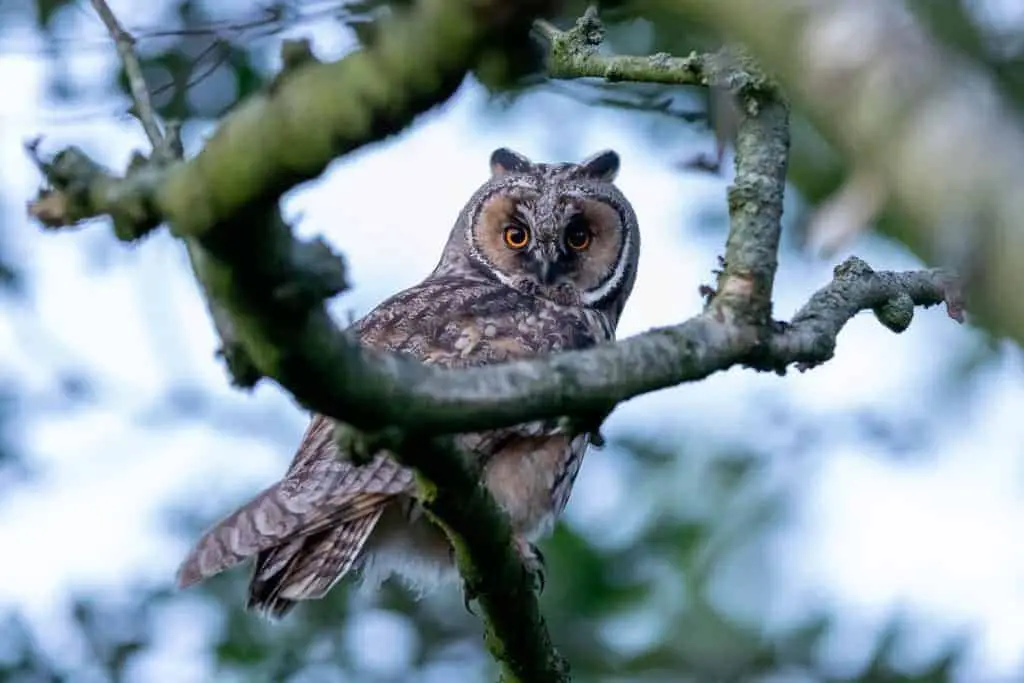
Wingspan
90 to 100cm
Weight
250 g
Life Expectancy
4 years
Diet
Small mammals, mice, rats & rabbits
The Long-eared owl gets its name from the two long feather tufts on its head, which are quite useful in identifying this species.
It a medium-sized owl (thus quite smaller than the Great Horned Owl, which also has prominent feather tufts), with yellow eyes and rusty-colored face patches.
It may seem similar to the Short-eared Owl; however the Long-eared Owl’s brown feathers are darker, particularly noticeable on its underside.
The Long-eared Owl prefers living in dense forests – both broad-leafed as conifer -to nest and roost but may hunt in more open areas for small mammals.
Outside the breeding season, Long-eared Owls may form large roosting colonies in tall trees, with dozens of individuals.
They are quite faithful to their roosting sites, so an owl can return year after year to the same tree.
That doesn’t mean, however, that they are easy to spot, because their sit really close to the trunk and their camouflaged feather patterns blend perfectly with the background.
The call of the Long-eared Owl is a single, low hoot spaced every few seconds, performed usually during the breeding period. It can also produce different sounds ranging from barks to higher-pitched screeches.
It is an uncommon winter visitor to Virginia, and tends to stay in the north and northwestern parts of the state. When present, it’s usually from November to March, with a possible peak in December and January.
8. Barred Owl
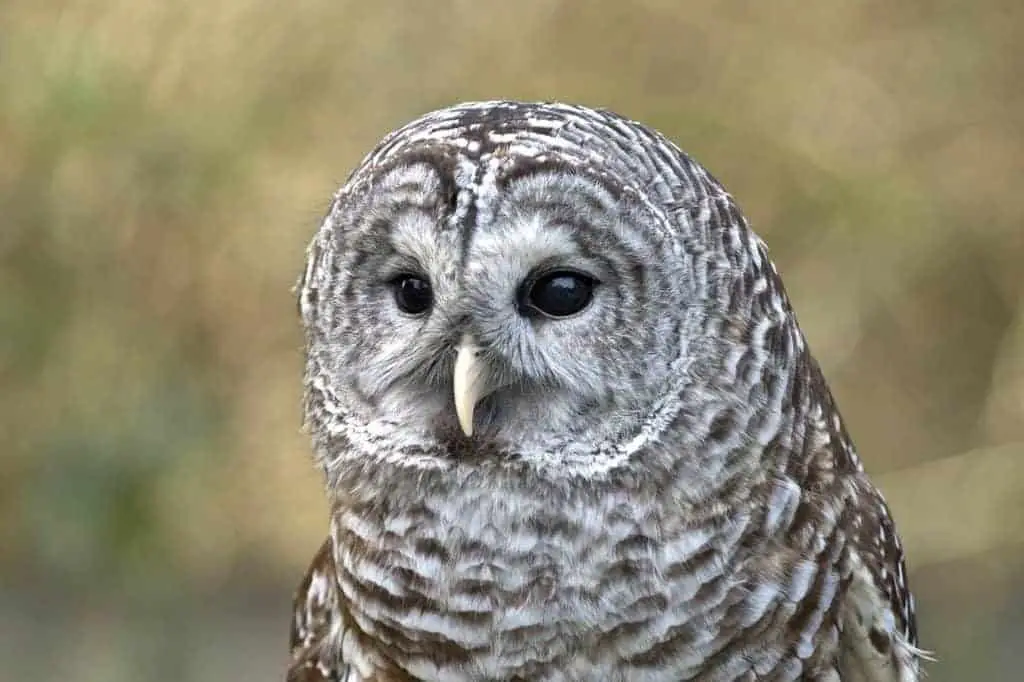
Wingspan
96-125 cm
Weight
468-1,150 g
Life Expectancy
10-23 years
Diet
Small mammals
The Barred Owl is likely to be the most common and frequently observed owl species in the state of Virginia.
Still, this doesn’t mean this owl make it easy on birdwatchers: their brown and white plumage helps these owls blend perfectly with the forests they live in.
Barred Owls are large owls (although still smaller than the Great Horned Owl), with a round head with no “ear” tufts. The face is whitish-grey, with black eyes and a contrasting yellow beak.
The Barred Owl feels at home in mature, old forests, either evergreen or deciduous. They nest in tree cavities, and may use old holes of ravens, crows or hawks.
Barred Owls also like to be near water and are also frequent inhabitants of swamps and lake shores.
They are not strange to sub-urban parks (also long as there is good tree cover) and tend to occupy nest-boxes when present.
The diet of Barred Owls is quite diverse, from mice to large insects, various reptiles and amphibians, and can prey on other birds and even on smaller owls! It hunts at night but is often active during the day.
The Barred Owl is very vocal and has a variety of calls. Its most common call is fairly recognizable and consists of series of hoots – uh-uh-uh-uh-uh-buhooooh – most easily remembered as “Who cooks for you? Who cooks for you all”.
The Barred Owl is present all year-round in the state of Virginia, with numbers (and observations) peaking around April.

More Articles.
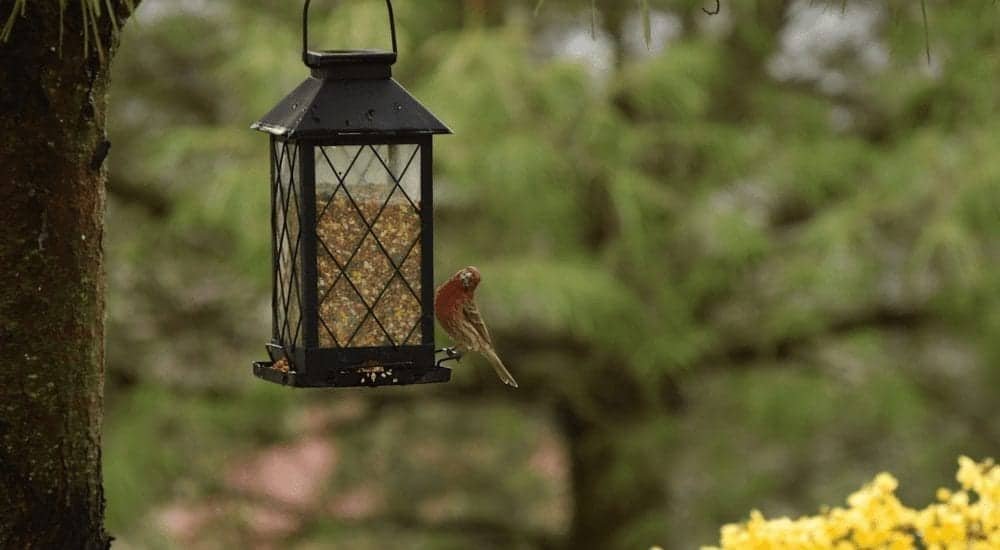
Bird feeders are a key part of any yard that wants to attract birds. They
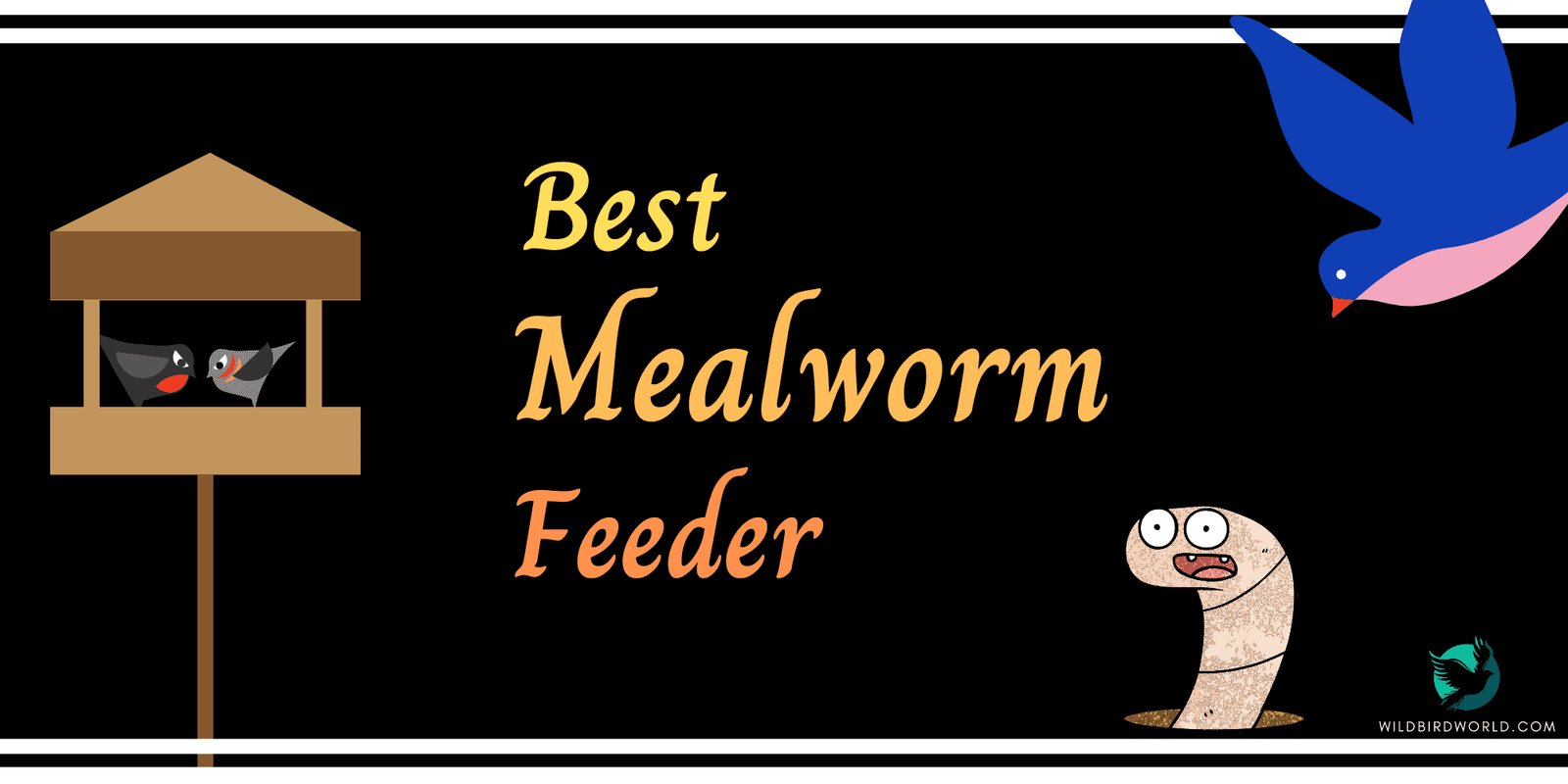
Though some birds are partial to seed and other popular forms of bird feed, some
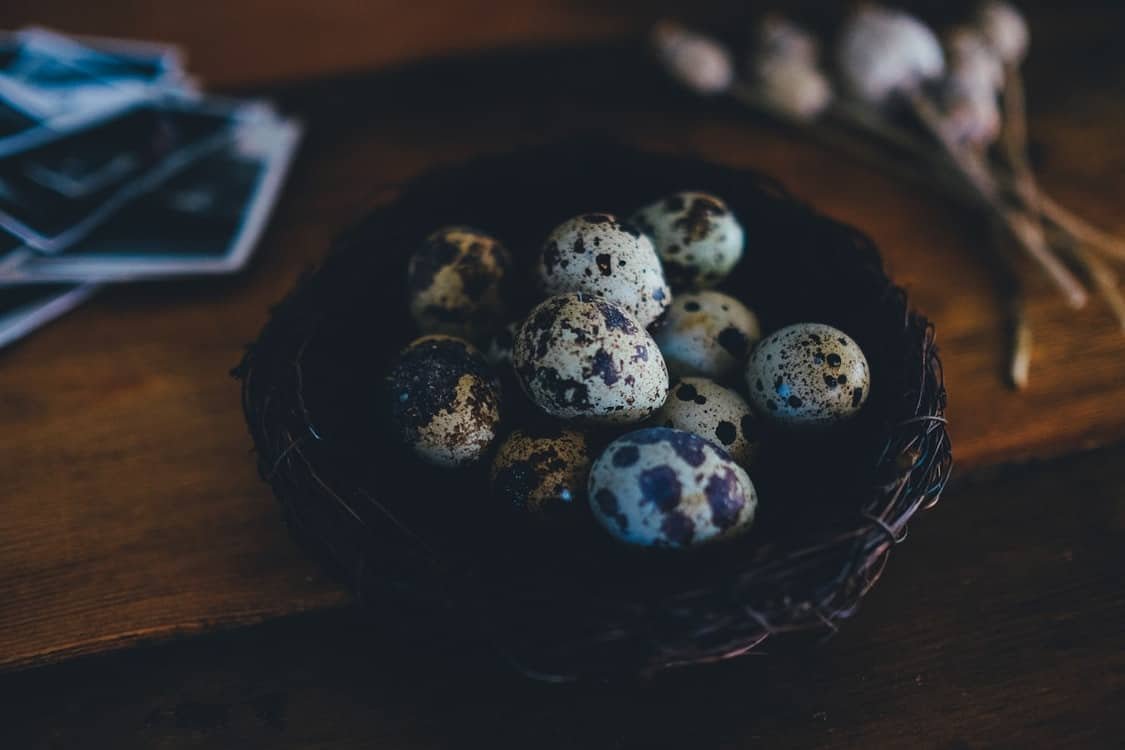
How to attract Quail to your yard?
Attracting quails to your yard might be easier than you first anticipate. These naturally shy

About Us
We are avid bird-watchers who recently retired, allowing us more time to travel the world. Fortunately, we have managed to visit numerous countries around Europe, Asia, and America. Watching and photographing birds has been a passion for many years and we are making the most of the extra time on our hands!
